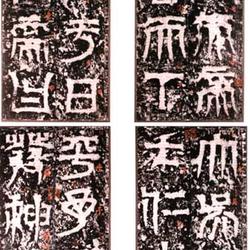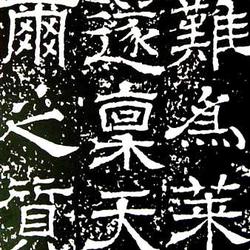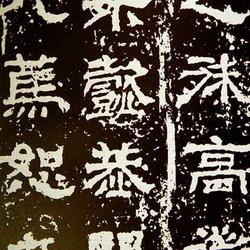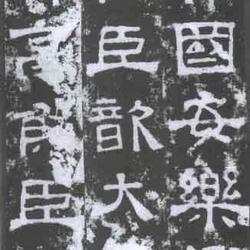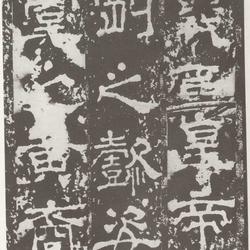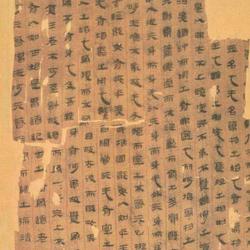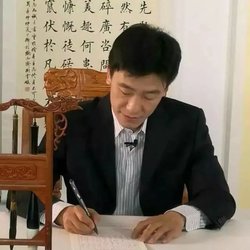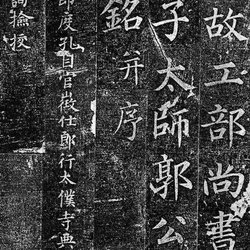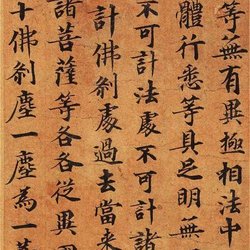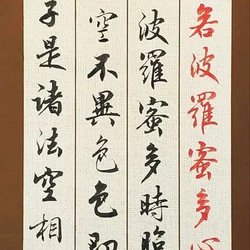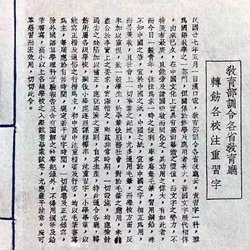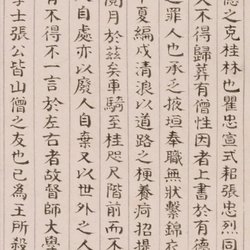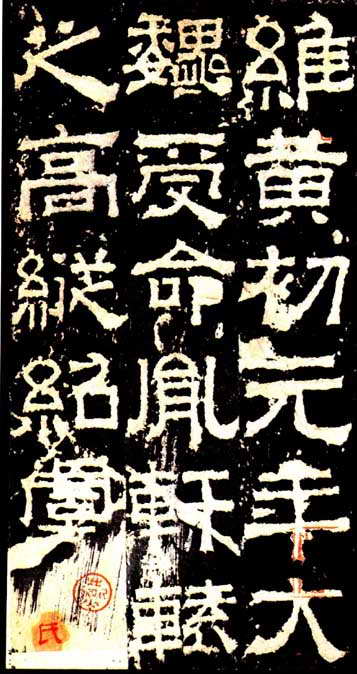
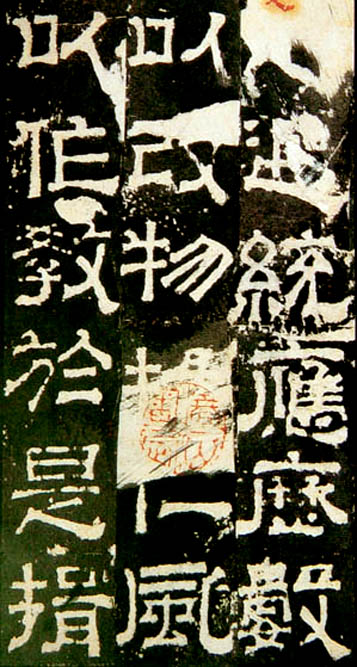
"Kong Xian Monument". Also known as "Lu Confucius Temple Stele", "Repairing Confucius Temple Stele", "Sealing Confucius Temple Stele", etc., it was engraved in the first year of the Wei and Huangchu years of the Three Kingdoms (220). Official script, twenty-two lines, four crosses, and seal script title on the forehead: "Stele of Confucius Temple in Lu". The stone is in Qufu, Shandong.
The character "Ti" on the cross in the eighteenth line of Song rubbings is intact, and the character "Dang" on the fifth line is intact. In the original Mingtuo, the word "体" in the lower right corner is damaged, and the word "qu" in the upper right corner is slightly damaged in the lower right corner. The same is true for the rubbings of "Ti" characters in the early Qing Dynasty. The character "Ti" in the rubbings between the Qian and Jiaqing periods only survives next to the word "bone". From now on, the word "bone" will disappear.
The right half of the "body" of this edition is in the National Library, and the side of the "bone" has been damaged. It is a rubbing from the mid-Qing Dynasty slightly later than the Qianjia period. One volume, seventeen and a half pages, each half has four lines of seven characters, and one and a half pages for the postscript. The outer frame is 32.5 cm high and 19 cm wide; the inner frame is 26.5 cm high and 16.3 cm wide. Zhang Zuyi's old collection contains Zhang Zuyi's inscription and postscript. Seal "Lei'an Zengzang", "Guquan", "Lei Yu's appraisal of gold and stone", "Lei Weng", "Song Qingyu reward", "Enjoy the daughter of gold", "Dingcheng collection", "Ancient Zhu Fang Wu's seal" ”, “Inscription of all the metal and stones of Dingchen”, “Inscription of Leikan” and other seals.
In the seventh year of Jiayou's reign in the Song Dynasty, Zhang Zhigui carved an inscription at the end of the stele, saying that the stele was written by Liang Hu, but there is no reliable evidence. Zhang also said: "In the past, people commented on his calligraphy: "The dragon is powerful and the tiger is powerful, and the Qi is strong, and it is the best in Wei Dynasty." Hong Shi's "Li Shi" said: "Wei Li's four steles are precious, and these are them. crown. "Zhao Kan of the Ming Dynasty called it "the knot method is ancient and the quality is strong." Yang Shoujing's "Review of the Stele" said: "This stele is really superior to the square board. It is a little dissatisfied and has a slightly frugal spirit. There were many regular scripts of this kind in the six generations, but there are few like it in the Northern Qi Dynasty." 』

